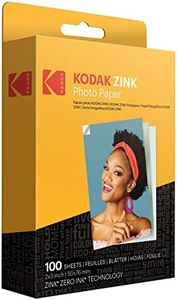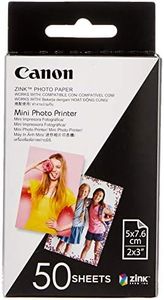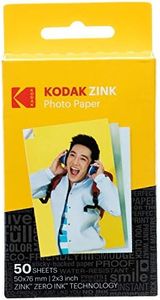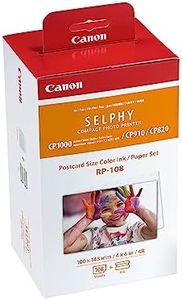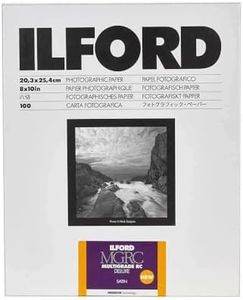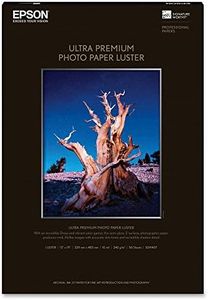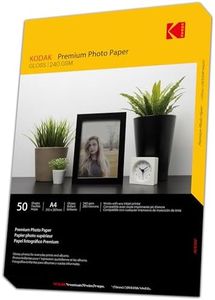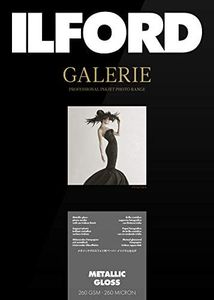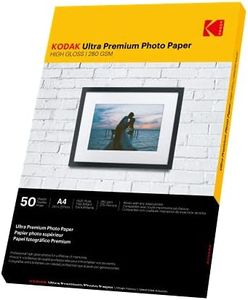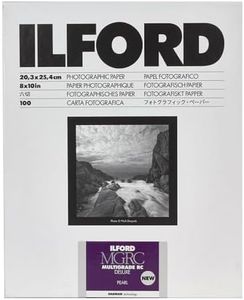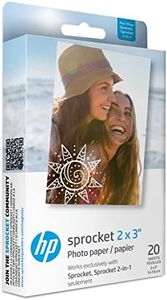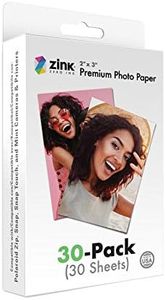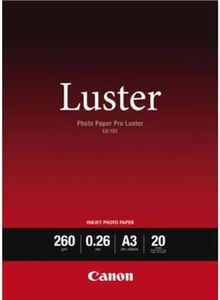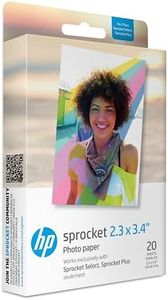We Use CookiesWe use cookies to enhance the security, performance,
functionality and for analytical and promotional activities. By continuing to browse this site you
are agreeing to our privacy policy
10 Best Photo Papers
From leading brands and best sellers available on the web.Buying Guide for the Best Photo Papers
Choosing the right photo paper is essential for getting the image quality and feel you want from your prints. Different photo papers can bring out colors, details, and textures in different ways, and your choice can affect how your photos look and last over time. Understanding the main characteristics of photo paper will help you pick the best one for your needs, whether you’re printing family photos, artwork, or professional photography.Finish (Glossy, Matte, Satin, Luster)The finish of the photo paper refers to its surface texture and shine. Glossy paper is shiny and makes colors look vibrant and sharp, which is great for colorful photos, but it can show fingerprints and glare in bright light. Matte paper is smooth without shine, offering a more subtle look and is good for black-and-white photos or art prints; it also resists fingerprints better but sometimes colors may appear less bold. Satin or luster papers are a compromise, offering some shine but not as much reflection or risk of fingerprints as glossy options. Choose the finish based on what kind of look and feel you want and how the photos will be handled or displayed.
Weight (GSM - Grams per Square Meter)Photo paper weight, measured as GSM, tells you how thick and sturdy the paper is. Lighter papers (around 120-180gsm) are thinner and can feel like standard printer paper, better for quick prints or drafts. Middle-range weights (around 200-270gsm) provide a nice, substantial feel and are suitable for most home photo printing. Heavier papers (over 300gsm) are thick and rigid, often used for professional or gallery-quality prints, but may not work in all home printers. Think about whether you want something lightweight and flexible or a thick photo that feels like it came from a photo lab.
Brightness and WhitenessBrightness or whiteness of photo paper affects how true and vivid your colors appear when printed. Brighter, whiter papers make colors pop and provide crisp contrast, ideal for color-rich images. Papers with a slightly warm or off-white tone can give photos a softer, classic look, which some people prefer for portraits or vintage-style prints. Your choice depends on your preference for modern vibrant looks or softer, classic tones in your pictures.
Ink CompatibilitySome photo papers are made specifically for certain types of ink, such as dye-based or pigment-based inks. Using the right paper for your printer ensures the ink dries properly and colors stay bright. If you’re not sure which type of ink your printer uses, look in your printer’s manual or on the ink cartridge itself, then check that the photo paper you buy matches. This helps you avoid smudging, poor color reproduction, or fading over time.
Size and CuttingPhoto paper comes in standard sizes like 4x6 inches, 5x7 inches, letter size, and larger options for posters. The right size depends on what you want to print and how you plan to display or frame your photos. Make sure the paper fits your printer’s capabilities and your intended final use, whether it’s for albums, frames, or portfolios. Some photo papers also feature pre-scored lines for easy trimming, which can be useful if you want to create custom sizes.
Longevity and Archival QualitySome photo papers are marketed as archival or long-lasting, designed to resist yellowing and fading over time. These are important if you want your photos to last for decades, whether for family albums or professional displays. Look for terms like 'archival,' 'acid-free,' or 'fade-resistant' if longevity matters to you, especially for important memories or art prints.
